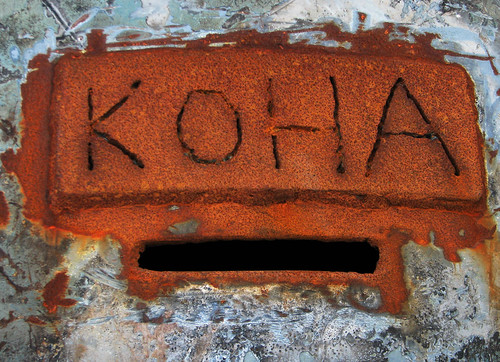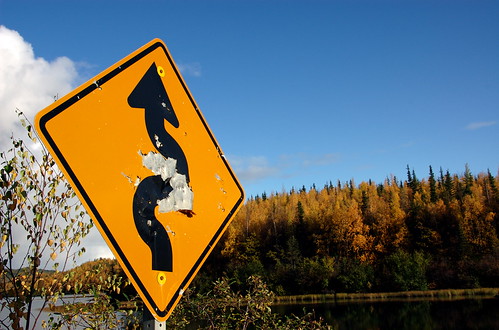
In
Jumbo Interactive Ltd & New South Wales Lotteries Corp v Elot, Inc. [2011] APO 82 (28 October 2011) we see two opponents successfully oppose a patent application. What is interesting is that they failed on every ground other than lack of patentable subject matter.
The Delegate has given Elot 60 days (to 28 December 2011) to propose suitable amendments addressing the ground that the claims do not define a manner of manufacture.
The patent application
Elot, Inc (the applicant) filed patent application
2007221934 as a divisional application on 10 October 2007. The application was advertised accepted on 2 April 2009 and opposed in June 2009 and July 2009. The controversial decision in
Invention Pathways Pty Ltd [2010] APO 10 (21 July 2010) (see my
blog post) was still a few months away.
There were 4 claims under consideration. Independent claim 1 and three dependent claims. Claim 1 read as follows:
1. A system for facilitating governmental lottery play over an electronic network comprising:
an agent server connected via said electronic network for receiving player and ticket information, including subscription play information, transmitted from a plurality of player terminals, for transmitting said ticket information to a governmental lottery administrator, and for receiving serial numbers issued by said governmental lottery administrator in association with each lottery ticket;
a database in said agent server for storing said player and ticket information and said serial numbers associated with each lottery ticket; and
a subscription play unit for monitoring subscription play of the same lottery numbers for a specified number of draws.
Incidental to the invention
Opponents Jumbo and NSWLC submitted that the claims were not directed to a manner of manufacture as they were directed to a non-patentable method. They submitted that the implementation via a computer did not make it a manner of manufacture as the computer was incidental to the method.
The Delegate noted that the High Court in
National Research and Development Corporation v Commissioner of Patents [1959] HCA 67; [1959] 102 CLR 252 provided a definitive statement of the law on manner of manufacture. This has been summarised as a requirement for ‘a mode or manner of achieving an end result which is an artificially created state of affairs of utility in the fields of economic endeavour’ (
CCOM Pty Ltd v Jiejing [1994] FCA 1168).
In
Grant v Commissioner of Patents [2006] FCAFC 120 the Court found that a method of protecting an asset including steps of establishing a trust, making a gift to the trust, making a loan from the trust and securing the loan was not a manner of manufacture. The Delegate referred to the often-quoted conclusion:
‘Whether the method is properly the subject of letters patent is assessed by applying the principles that have been developed for determining whether a method is a manner of manufacture, irrespective of the area of activity in which the method is to be applied. It has long been accepted that "intellectual information", a mathematical algorithm, mere working directions and a scheme without effect are not patentable. This claim is "intellectual information", mere working directions and a scheme. It is necessary that there be some "useful product", some physical phenomenon or effect resulting from the working of a method for it to be properly the subject of letters patent. That is missing in this case.’
The Delegate acknowledged that claim 1 included an “agent server” which was said to be capable of collecting and storing particular pieces of information. However, whatever “effect” is generated by that collection and storage, said the Delegate, it is incidental to the claimed invention.
No meaningful limit on the claim
The Delegate referred to
Network Solutions, LLC [2011] APO 65 (see my
blog post). That decision referred to a recent decision in the United States in
CyberSource Corporation v. Retail Decisions, Inc., No. 2009-1358 (Fed. Cir. August 16, 2011) (see my
blog post).
Cybersource observed:
‘As we stated in Bilski, to impart patent-eligibility to an otherwise unpatentable process under the theory that the process is linked to a machine, the use of the machine “must impose meaningful limits on the claim’s scope.” … In other words, the machine “must play a significant part in permitting the claimed method to be performed.”’
In
Network Solutions the Delegate went on to comment that:
‘The commonality in approach with the US in relation to abstract ideas has been noted by Australian Courts (eg Grant at [21]-[24]) and, to the extent that a rule of materiality may not have been explicitly expressed in Australia, I nevertheless consider it to be an inherent requirement of the law which otherwise would elevate form over substance to the point of absurdity.’
Coming back to the present case, our Delegate concluded that ‘while “physical effects” might be able to be identified in claims, the consideration must be to ask whether those effects are “material” or, to use the words in
CyberSource (supra), whether the effect places a meaningful limit on the claim’s scope.’
The “agent server” of claim 1, said the Delegate, is essentially characterised by the information content of the data it stores. It provides no material advantage to the agent server and, therefore, the agent server does not place a meaningful limit on the claim.
The Delegate then referred to the “subscription play unit”, said to monitor subscription play of the same lottery numbers for a specified number of draws. He took this as nothing more than facilitating the play. The utility of this unit lies in the information that it monitors (i.e. the “subscription play information”). The unit in and of itself does not place a meaningful limit on the claim.
Further steps
It’s now over to the applicant to come up with “physical effects that need to be placed into the claims to ensure that they are directed to patentable subject matter”.
It seems strange to me that the Delegate here doesn’t mention
Ultramercial LLC v Hulu LLC (Case No. 2010-1544) (see my
blog post). Sure it’s a US case. But the Australian Delegate in
Network Solutions was very quick to follow the United States
CyberSource decision.
Perhaps the reason for the oversight is because the Court in
Ultramercial observed that subject matter eligibility is merely a threshold check. The categories of patent-eligible subject matter are no more than a “coarse eligibility filter”. Claim patentability ultimately depends on the conditions and requirements such as novelty, non-obviousness, and adequate disclosure.
Photo courtesy of author Jeremy Brooks under Creative Commons licence.
 The theme for this year is on how innovation might be commercialised to “save the world” from threats such as disease, poverty, food shortages, over-population and environmental destruction.
The theme for this year is on how innovation might be commercialised to “save the world” from threats such as disease, poverty, food shortages, over-population and environmental destruction.







